
Helianthus cusickii is a species of sunflower known by the common names Cusick's sunflower and turniproot sunflower. It is native to the western United States from Washington, Oregon, Idaho, northern California, and northwestern Nevada.

Carex comosa is a species of sedge known as longhair sedge and bristly sedge. It is native to North America, where it grows in western and eastern regions of Canada and the United States, and parts of Mexico. It grows in wet places, including meadows and many types of wetlands. Tolerates deeper water than most common species and is good for retention basins. This sedge produces clumps of triangular stems up to 100 or 120 centimeters tall from short rhizomes. The inflorescence is up to 35 centimeters long and has a long bract which is longer than the spikes. It is a cluster of several cylindrical spikes. The scales over the fruits taper into long, thin awns.

Carex filifolia is a species of sedge known by the common name threadleaf sedge. It is native to western North America and grows on slopes, eroded areas, gravel, and dry habitats.
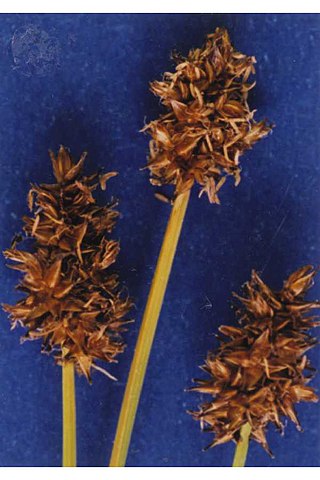
Carex jonesii is a species of sedge known by the common name Jones' sedge. It is native to the Western United States and grows in moist habitats.

Carex lenticularis is a species of sedge known by the common names lakeshore sedge and goosegrass sedge. It is native to much of northern North America, including most all of Canada and the western United States, where it grows in wet habitats.

Carex nebrascensis is a species of sedge known as Nebraska sedge.

Carex rossii, commonly known as Ross's sedge, is a hardy species of sedge that is often a pioneer species in areas with little or no established vegetation, or in places where disturbance has occurred. Ross's sedge grows in a variety of habitats throughout much of western North America, from Alaska to Ontario, south to New Mexico and California. It flowers in May and June.
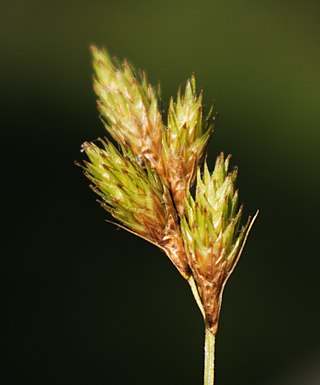
Carex scoparia is a species of sedge known by the common names broom sedge and pointed broom sedge. It should not be confused with the unrelated grass species known as "broom sedge," Andropogon virginicus.
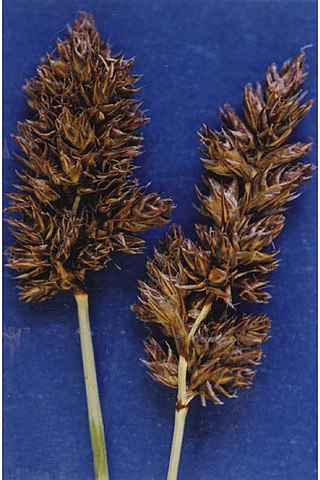
Carex simulata is a species of sedge known by the common name analogue sedge.
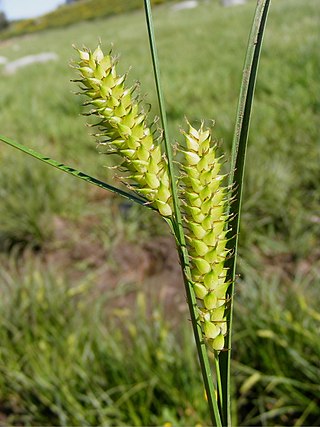
Carex vesicaria is an essentially Holarctic species of sedge known as bladder sedge, inflated sedge, and blister sedge. It has been used to insulate footwear in Norway and among the Sami people, and for basketry in North America.
Lomatium cusickii is a perennial herb of the family Apiaceae. Its range is in the Northwestern United States. Its native habitats include well-drained meadows, ridges, slopes, and conifer forests.

Lupinus argenteus is a species of lupine known by the common name silvery lupine. It is native to much of western North America from the southwestern Canadian provinces to the southwestern and midwestern United States, where it grows in several types of habitats, including sagebrush, grassland, and forests.
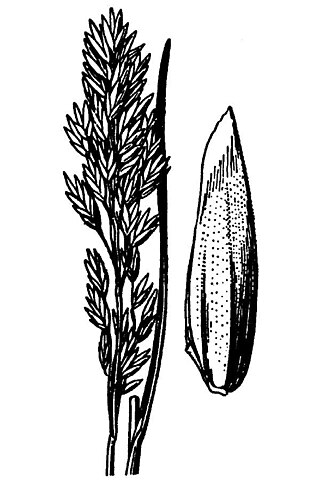
Poa cusickii is a species of grass known by the common name Cusick's bluegrass. It is native to western North America from Yukon to Colorado to eastern California, where it grows in many types of habitat, including high mountain meadows and slopes, sagebrush scrub, and forests.

Ranunculus eschscholtzii is a species of buttercup flower known by the common name Eschscholtz's buttercup.

Trifolium eriocephalum is a species of clover known by the common name woollyhead clover or hairy head clover.

Artemisia norvegica is a species of flowering plant in the aster family known by the common names alpine sagewort, boreal sagewort, mountain sagewort, Norwegian mugwort, arctic wormwood, and spruce wormwood. It is found in cold locations in Eurasia and high altitudes and high latitudes in North America.

Potentilla hippiana is a species of flowering plant in the rose family known by the common names woolly cinquefoil, horse cinquefoil, and Hipp's cinquefoil. It is native to North America, where it occurs in western Canada and the western United States. It occurs in eastern Canada and the US state of Michigan as an introduced species.

Carex merritt-fernaldii, or Fernald's sedge, is a species of sedge from northeastern North America. It was first described by Kenneth Mackenzie in 1923. It is named after botanist Merritt Fernald.
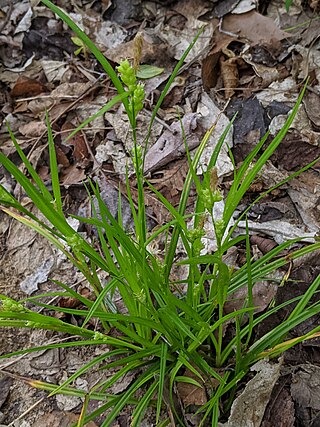
Carex blanda, the common woodland sedge or eastern woodland sedge, is a species of sedge native to a wide variety of habitats in the eastern and central United States and Canada.



















